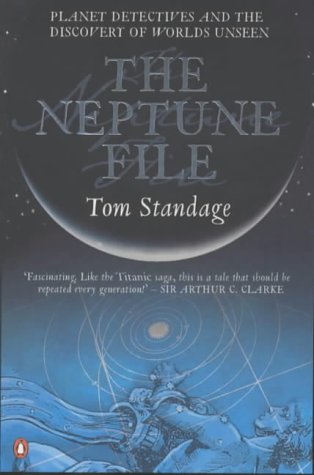The Neptune File
Ulasan Buku 2021
Jumlah paparan: 3295
'The Neptune File '- Tom Standage
ISBN : 0140294643
Penerbit: Penguin Books
No. Panggilan: QB36.A2 S73 2000
Tahun diterbitkan : 2000
Mukasurat: 214
Url Efind : https://efind.ump.edu.my/cgi-bin/koha/opac-detail.pl?biblionumber=53224
Pengulas :
Pn. Baizlinda Azlin Jasni, Pembantu Pustakawan
Alamat emel ini dilindungi dari Spambot. Anda perlu hidupkan JavaScript untuk melihatnya.
ISBN : 0140294643
Penerbit: Penguin Books
No. Panggilan: QB36.A2 S73 2000
Tahun diterbitkan : 2000
Mukasurat: 214
Url Efind : https://efind.ump.edu.my/cgi-bin/koha/opac-detail.pl?biblionumber=53224
Pengulas :
Pn. Baizlinda Azlin Jasni, Pembantu Pustakawan
Alamat emel ini dilindungi dari Spambot. Anda perlu hidupkan JavaScript untuk melihatnya.

Tom Standage is a journalist and author that was born from London. He studied engineering and theoretical computing at Dulwich College. After graduated of Oxford University, he has worked as a science and technology writer for a number of newspapers and magazines, including The Guardian, Wired, The New York Times, FEED, The Financial Times, and The Daily Telegraph. Standage has joined The Economist in 1998 and previously served as Digital Editor, Business Affairs Editor, Business Editor, Technology Editor and Science Correspondent. Tom is also the author of history books, including A History of the World in 6 Glasses, An Edible History of Humanity, The Victorian Internet, writing on the Wall, The Turk, Seriously Curious, Go Figure, Uncommon Knowledge, A Brief History of Motion, The Future of Technology and The Neptune File. He lives in Greenwich, England, with his wife and children, and is currently working on a new book.
This book tells the story of the gifted mathematician John Couch Adams and the discovery of the planet Neptune in 1846. The Neptune story is well presented and the scientific political intricacies of the time easily followed. It hits the nail squarely on the head in describing an unfortunate episode that could have gone in favor of UK astronomy, but didn’t. Nevertheless, a supreme example of computational dexterity on both sides of the Channel and Standage describes the situation with paramount skill. Combining scientific triumph with international controversy, this is an intriguing tale of the search for an unseen planet, and the uproar it caused.
Although unlikely to be the definitive work on the Neptune scandal, because it is clearly aimed at non-technical readership, it is nevertheless a good overview for the layman and amateur astronomer. This book is well written and is certainly recommended to anyone interested in astronomical history and planetary discovery. But the book deserved to be better produced. More illustrations would have been welcome and proper photographs, not just poorly reproduced pictures and line diagrams. The Neptune File is a great read and will be a welcome addition to the amateur astronomer’s bookshelf or to the astronomy section of any public library.





